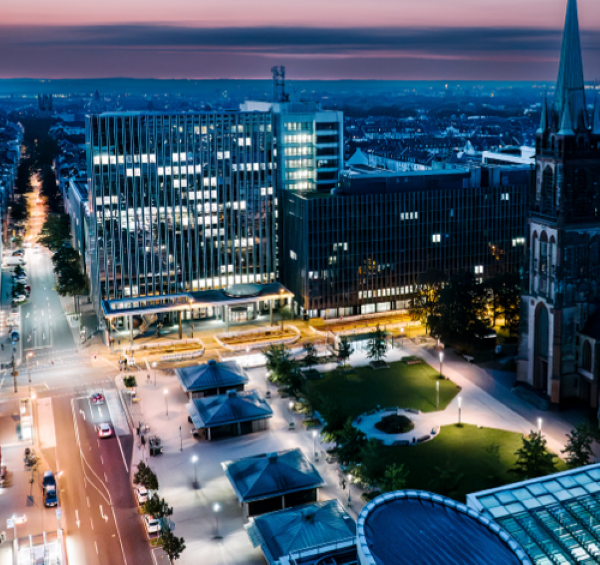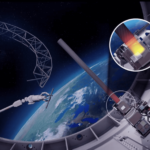Tarina Hawkins is a regular contributor to the 21st Century Tech Blog. In this article, she writes about the lighting challenges cities face. A modern city consumes 20% to 40% of its electricity for lighting. Smart lighting can reduce that percentage dramatically. I will let Tarina explain where two technology vendors are taking the technology and why they represent important urban infrastructure initiatives.
As part of plans to build a climate-resilient future, governments around the world are investing in smart technology to significantly slash urban carbon emissions. Currently, cities account for a staggering 70% of greenhouse gas emissions (GHGs) globally. Switching to smart public lighting can reduce GHGs by 1.4 billion tons annually, eliminating the need for 1,250 new power plants worldwide.
Aside from simple illumination, smart technology experts see more than just providing illumination. These smart devices can be built to do a wide range of applications from charging electric vehicles (EVs) to providing directional assistance during emergencies and extreme weather events.
Düsseldorf Pioneers Sustainable Urban Lighting
The Düsseldorf Fürstenwall has been designated the German city’s “future district” and has served as a test bed for building a sustainable city of the future. One of the futuristic projects has focused on urban lighting with a pilot project that involved installing 3,000 public light fixtures. These LED street lights have lowered energy use by 60%. The city’s electric utility, Stadtwerke Düsseldorf, has been working with the Dutch lighting supplier, Signify. The Philips LumiStreet luminaires are managed remotely using the Interact dashboard computer system. They have worked perfectly. The plan is to renovate 3,000 fixtures per year with the completion of a digitalized lighting network by 2035.
Signify provides LED lights that are more powerful than traditional sodium bulbs and produce far less light pollution. They use smart sensors that fade and brighten as needed. When a pedestrian or vehicle approaches, the lights brighten. The Interact dashboard allows for remote management of the lighting system. The smart lights send real-time status updates to Interact and identify when repairs are needed. The smart light fixtures are also compatible for use as EV charge ports.
With the growing number of EVs globally, charge station infrastructure is a growing requirement. The American government spent $25 million last year to acquire smart charging ports for its federal properties because of growing EV demand. The number $25 million is a drop in the bucket when compared to the annual energy budget of $50 billion for the U.S. government. Smart lighting is almost a rounding error, but the Düsseldorf test bed is providing a compelling case for the U.S. and others to consider installing smart light-EV charge stations like the ones in Düsseldorf. Combined with Interact, drivers can be guided to the nearest open charging port that will light up upon their arrival.
Smart Solar Off-Grid Street Lighting Systems
Another novel lighting technology comes from Toronto-based Clear Blue Technologies. This company has been developing smart lighting technology systems since 2011. They operate off-the-grid in any environment, urban or rural. The company manages its light installations around the world using the Clear Blue Ilumience cloud app. The lighting fixtures can install anywhere. They are off grid. No trenching or cabling are required making installation costs low.
The llumience cloud app is accessible by computer or smartphone. Lighting profiles are customizable to meet time of day and day of the week requirements. Adjustable light intensities can be provided for streets, roads, parks, and bridges around the clock. Illumience also provides customized alarm thresholds linked to the performance of each component within the light fixture and sends messages and email maintenance alerts. System maintenance can be remote, lowering the need for on-site visits and reducing maintenance costs by 70%.
Smart Lights, Safer Streets, Climate Resilient Cities
A recent Intel report forecasted that the street lights of the future will be equipped with smart sensors to help people in emergencies, including road accidents. It appears the future is now, looking at what Signify and Clear Blue Technologies have accomplished in the present.
The Intel report described lighting fixtures equipped with IP cameras to live-stream video showing vehicle and pedestrian traffic around the clock. The lights could be used to dispatch police, fire and medical emergency staff to an accident or emergency. The lights could automatically adjust their brightness to help with rescue requirements.
With extreme weather events fuelled by climate change on the rise, by 2030, the U.S. expects to see more heatwaves, storms, floods, and droughts. Smart street lighting can help with lights programmed to flash on and off, display different colours, highlight safe evacuation routes and more. Speakers integrated with the light fixtures could be used to provide audio warnings. Off the grid and wireless Internet features also mean smart lights that can continue to operate even in the face of power outages.
The energy savings, the multipurpose capability of smart lighting fixtures to serve the growing EV-support infrastructure, their emergency safety features that can be added, the remote management capability, and the low installation and maintenance costs, make widespread adoption of smart lighting inevitable as the 21st century unfolds.









